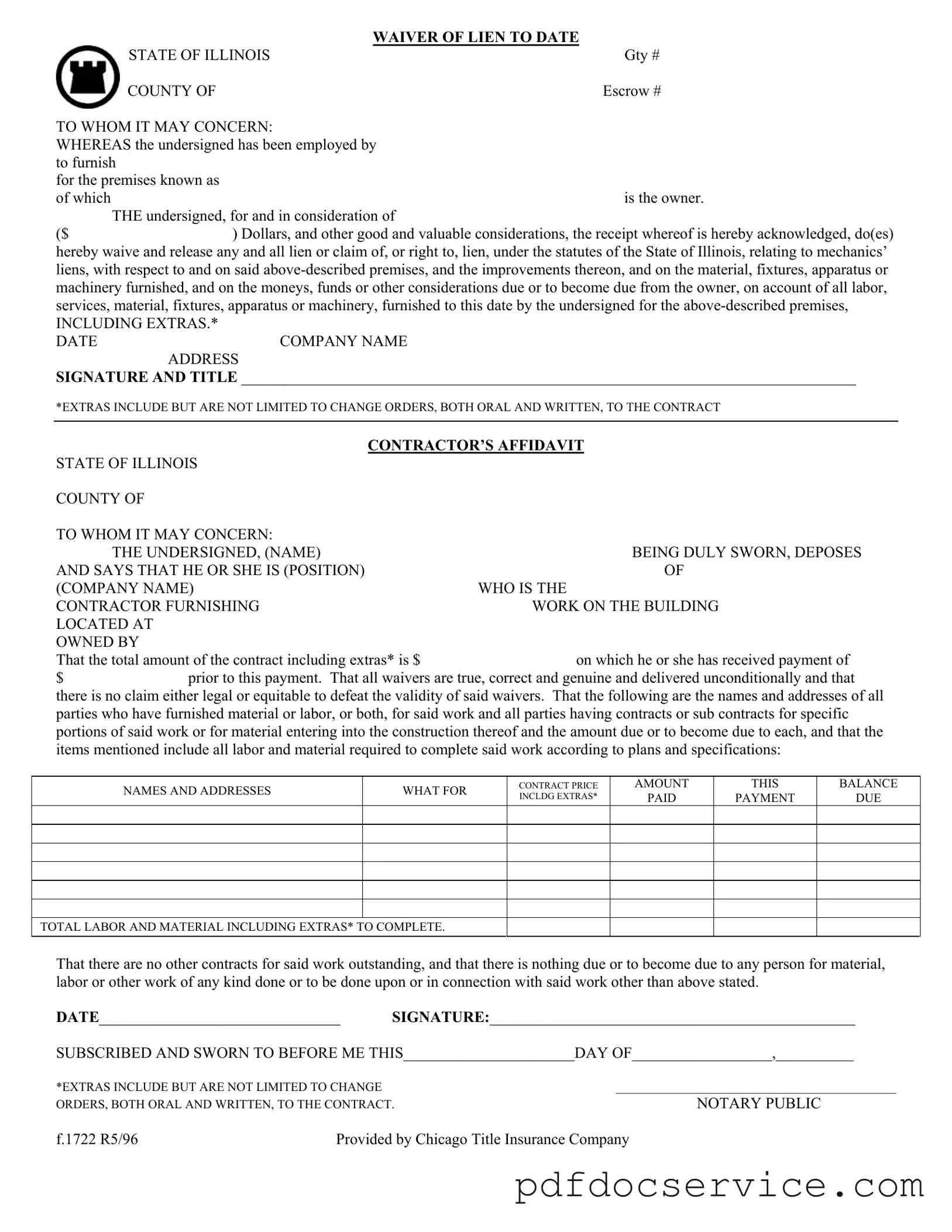The Chicago Title Waiver Format form serves a critical role in real estate transactions, particularly in Illinois. This document is designed to protect property owners from potential mechanics' liens, which can arise when contractors or suppliers are not paid for their services or materials. By signing this form, the contractor formally waives any claim to a lien against the property, thereby ensuring that the owner has clear title. The form includes essential details such as the company name, the project address, and the amount being waived, providing transparency in the transaction. It also requires the contractor to affirm that all prior payments have been made and that there are no outstanding claims against the property. This process helps to maintain trust between parties and protects the interests of everyone involved. Additionally, the contractor must provide a list of all parties who have contributed labor or materials, ensuring that all obligations are disclosed. The inclusion of a notary public signature adds a layer of authenticity, confirming that the waiver is legally binding. Overall, the Chicago Title Waiver Format is a vital tool for safeguarding property rights and ensuring smooth real estate dealings.
